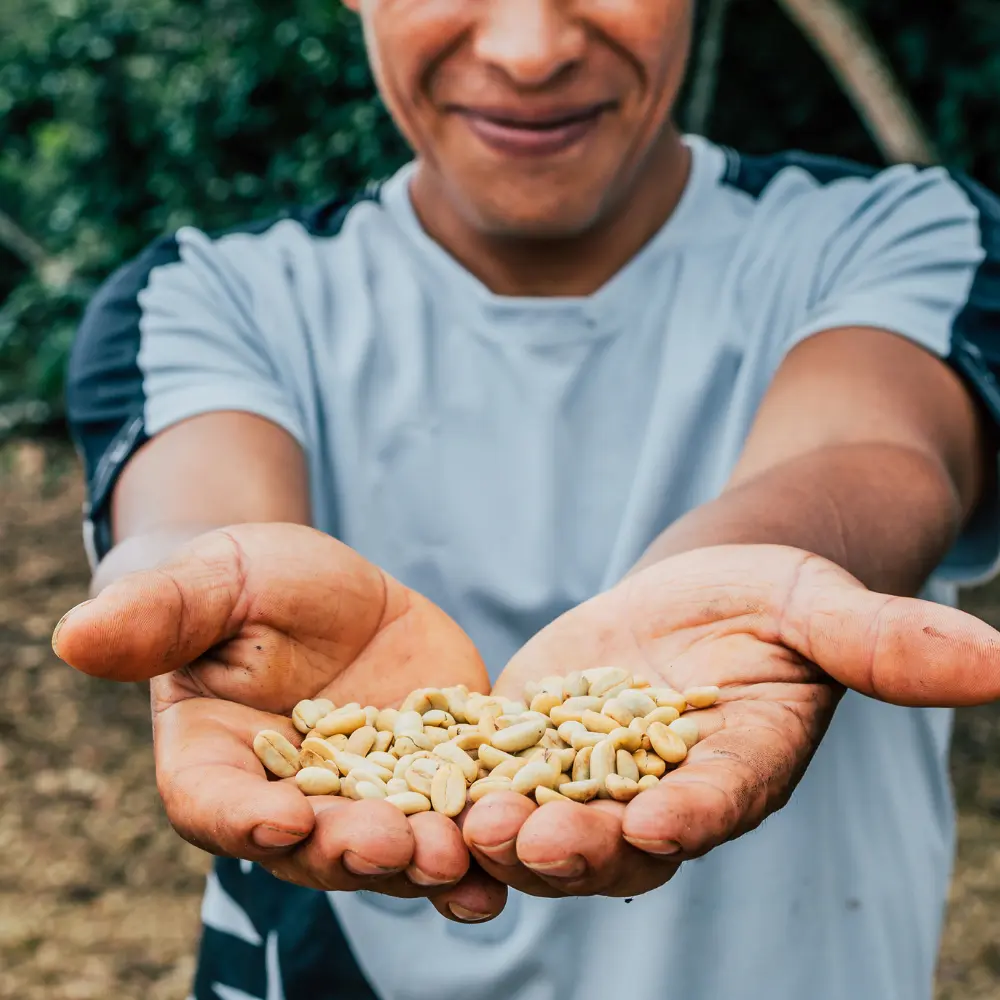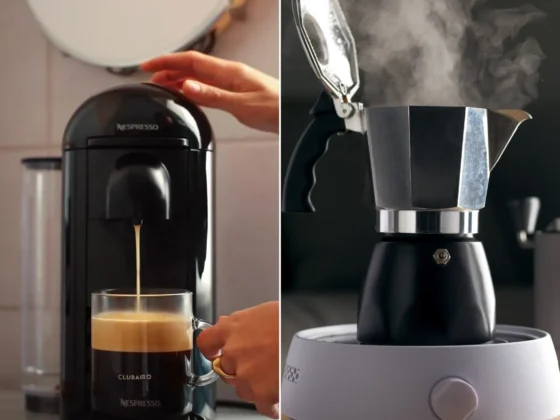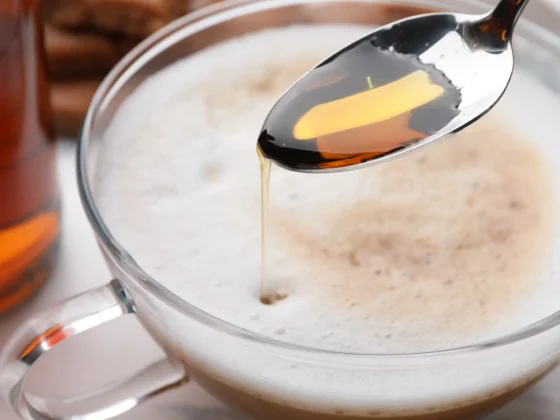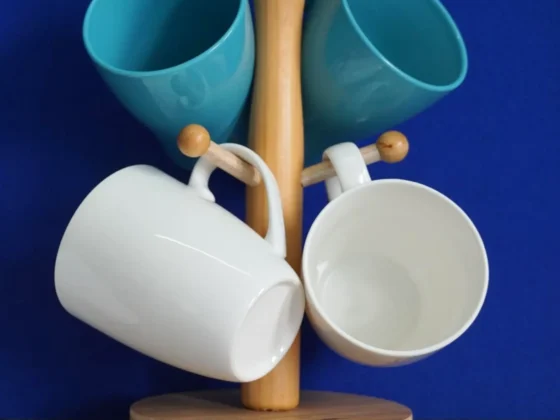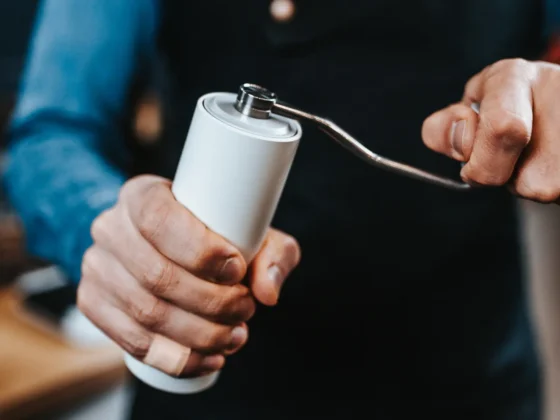In the world of coffee brewing, innovation, and tradition often cross paths, creating a unique blend of old and new methods that all aim for one thing – the perfect cup of joe. One such method that has stood the test of time yet often flies under the radar, is brewing coffee with a coffee sock. Yes, you read that right. A coffee sock is not a piece of hosiery gone astray but a highly functional brewing tool with roots in traditional coffee-making practices.
A coffee sock, made from a fabric filter (usually cotton), and a wire or wooden handle, offers a sustainable, economical, and somewhat charming way of making your favorite brew. Its simplicity belies the rich and full-bodied coffee it can produce, making it a hidden gem among brewing methods.
In this comprehensive guide, we’ll explore the fascinating history of this brewing device, delve into the advantages it offers over other brewing techniques, and provide you with a detailed step-by-step guide to brewing coffee using a sock coffee. We’ll also discuss how to care for your brewing device to ensure it lasts, and finally, we’ll put this brewing technique against other popular brewing methods. So whether you’re a seasoned coffee aficionado or a curious novice, prepare to embark on a flavorful journey that might just change the way you brew your morning cup.
Coffee Sock: Key Takeaway
- Historical and Cultural Significance: Sock coffee has a rich history, originating from Central and South America. Its use over centuries underlines its effectiveness and cultural importance in coffee brewing.
- Environmental and Economic Benefits: Coffee socks are reusable and biodegradable, making them an eco-friendly alternative to disposable paper filters. Economically, they are inexpensive to purchase and use, leading to cost savings in the long run.
- Unique Flavor Profile: The natural fabric of this brewing device allows more oils and fine particles to pass through, resulting in a full-bodied, richly flavored brew with more complexity and depth than most other brewing methods.
- Proper Care and Maintenance: Ensuring the longevity and effectiveness of the sock involves proper cleaning, storage, and timely replacement. A well-cared-for sock can last several months or even a year.
- Comparison to Other Brewing Methods: Compared to drip coffee, French press, and espresso machines, this brewing method offers a unique balance of flavor, simplicity, sustainability, and affordability. It produces a brew with less sediment than a French press, more body than drip coffee, and doesn’t require electricity like an espresso machine.
History of the Coffee Sock
The history of this brewing device is as rich and intriguing as the coffee it brews. Let’s take a walk down memory lane and discover the roots of this traditional brewing method.
Origins of the Coffee Sock

This brewing technique hails from North and South America, specifically countries like Costa Rica, and Mexico. The term ‘coffee sock’ comes from the sock-shaped cotton filter used in the brewing process. This filter, often hand-sewn, was mounted on a wire handle or wooden stand. Locals would place the ground coffee in the sock and pour hot water over it, allowing the coffee to steep and filter through the sock into a pot or mug below. This method offered a simple and effective way to brew coffee, requiring no electricity or expensive equipment. It was born out of necessity and practicality, and its roots are deeply intertwined with the culture and tradition of these regions.
Evolution of the Coffee Sock
Over the years, this brewing device has seen some changes, although its core principle remains the same. The basic cotton sock has evolved into various shapes and sizes to accommodate different brewing styles and quantities. Some modern versions come with metal or plastic rings to hold the filter open and make the brewing process easier.
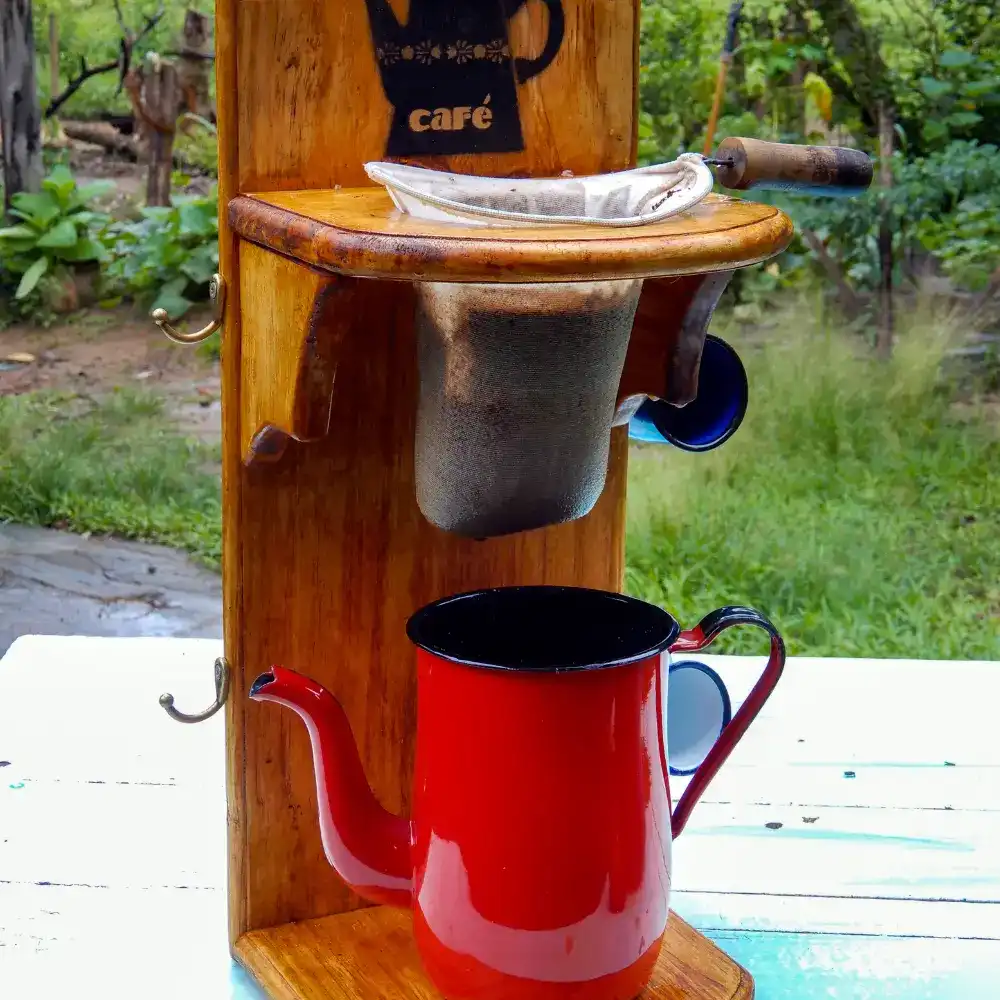
There have also been improvements in the fabric used for the filters. While cotton remains popular due to its durability and filtering capabilities, some modern socks use linen or hemp. These materials offer different flavor profiles and filtration speeds, allowing coffee enthusiasts to customize their brew.
Coffee Sock in Modern Brewing
In an age of high-tech coffee machines and intricate brewing gadgets, this brewing method holds its own with its simplicity and sustainability. It’s experiencing a resurgence among coffee enthusiasts who appreciate its low environmental impact and the control it offers over the brewing process.

Coffee socks are now a staple in many specialty coffee shops around the world. Baristas appreciate the full-bodied and sediment-free brew it produces, something that’s hard to achieve with paper filters. Moreover, these socks are a hit among eco-conscious consumers, as they’re reusable and produce less waste compared to disposable filters.
Despite its humble origins, this brewing device has carved a niche for itself in the modern coffee brewing landscape, standing tall alongside its more technologically advanced counterparts. It is a testament to the timeless appeal of simple, sustainable, and effective brewing methods.
The Advantages of Brewing with a Coffee Sock
There’s more to the sock than just its charming simplicity. This traditional brewing tool brings a host of advantages to the table, from its eco-friendliness to its unique flavor extraction capabilities. Let’s delve into the benefits that make brewing with a coffee sock a rewarding experience.
Environmental Benefits of Coffee Socks
In an era where sustainability is more crucial than ever, sock coffee stands out as a remarkably eco-friendly brewing method. Unlike paper filters that are used once and then thrown away, this brewing tool is reusable, significantly reducing waste. Some high-quality coffee socks can last for many months, or even a year or more, with proper care.

Moreover, because this brewing device is typically made of natural materials like cotton, hemp, or linen, it’s biodegradable. When they do eventually wear out, they can be composted instead of ending up in a landfill. This low-waste, low-impact approach to brewing coffee is a simple and effective way to reduce our environmental footprint.
Flavor Profile: What to Expect
The flavor of coffee brewed with this distinctive device is distinct and can be a pleasant surprise to those used to paper-filtered coffee. The natural fabric of the sock allows more oils and fine particles to pass through than a paper filter, resulting in a full-bodied, richly flavored brew with more complexity and depth.

Yet, unlike metal filters, a coffee sock filters out most of the sediment that can make coffee taste gritty. The result is a clean cup that strikes a balance between the robust flavor of French press coffee and the clarity of pour-over coffee. This unique flavor profile is part of the reason why this brewing tool has remained popular despite the proliferation of modern brewing gadgets.
Economic Advantages of Coffee Socks
This brewing method is also kind on the wallet. It’s typically inexpensive to purchase, and the fact that it’s reusable means you save money in the long run. Compare this to disposable paper filters or the cost of capsules for some espresso machines, and the savings become clear.
Additionally, this brewing device doesn’t require any special or expensive equipment. All you need is a coffee sock, a pot or mug, and hot water. This simplicity makes it an economical choice for both home and travel. For coffee lovers on a budget or those just starting their brewing journey, this brewing method is an excellent, cost-effective way to enjoy a great cup of coffee.
Step-by-Step Guide to Brewing with a Coffee Sock
Now that you’re well-versed in the history and benefits of the coffee sock, it’s time to get down to the fun part: brewing your coffee. The process might seem a bit daunting at first, but with a little practice, you’ll soon be making delicious coffee with your sock like a seasoned barista.
Preparing Your Coffee Sock
Before you start brewing, it’s important to properly prepare your sock. This involves cleaning it thoroughly to remove any dust or loose fibers. Rinse the sock under warm water, then soak it in a solution of boiling water and a little baking soda for about 10 minutes. This will not only clean the sock but also neutralize any flavors that could interfere with the taste of your coffee.

Once your sock is clean, it’s ready to use. You don’t need to dry it before brewing; a damp sock will work just fine.
Brewing Process Explained
Start by bringing water to a boil. The amount of water you’ll need will depend on how much coffee you want to make, but a good rule of thumb is to use 15-20 grams of coffee for every 250 ml of water.

While the water is heating, grind your coffee beans. You’re aiming for a medium to coarse grind. Too fine, and the water will take longer to filter through, resulting in over-extracted and bitter coffee. Too coarse, and the water will pass through too quickly, leading to under-extraction and a weak, sour taste.
- Place the coffee grounds in the sock, then gradually pour the hot water over the grounds, making sure all the coffee is wet, just enough that the water saturates the grounds. This is known as a coffee bloom. Wait about half a minute as your coffee degasses and bubbles and slowly continue to pour your water.
- Let the coffee steep for about 4 minutes. Feel free to adjust the steeping time to suit your taste. If you prefer a stronger cup, let it steep a little longer; for a milder flavor, reduce the steeping time.
- Once the coffee has steeped, carefully remove the sock, letting any remaining coffee drip into your pot or mug.
- Pour your freshly brewed coffee into your favorite cup, and enjoy!
Tips for the Perfect Brew
Just like any brewing method, making coffee with a sock involves a bit of experimentation until you find what works best for you. Here are a few tips to help you along the way:
- Always use freshly roasted and freshly ground coffee for the best flavor.
- Experiment with different types of coffee beans to find your preferred taste.
- Make sure your water is at the right temperature. Ideally, it should be just off the boil (around 195-205°F or 90-96°C).
- Be patient and let the coffee steep for the full time. Rushing the process can result in a weak or under-extracted brew.
- Clean your sock after each use to prevent the buildup of coffee oils that can make your coffee taste bitter.
By following these steps and tips, you’ll be well on your way to brewing an excellent cup of coffee. Enjoy the process and the delicious results!
- Authentic and Traditional Made in Thailand
- Specifically for Thai tea and coffee. Perfect for large batches at once.
- Diameter : 5.3″ Metal Handle Length:5.5″ Cone shape bag depth : 9.5″
- This tea filter is made of muslin cotton, Chrome Plated Plain Steel Handle, Easy for Handle
- Reusable
Caring for Your Coffee Sock
Maintaining your brewing device is just as important as the brewing process itself. Proper care can extend its lifespan, keep your coffee tasting great, and ensure you’re brewing hygienically. Here’s what you need to know about cleaning, storing, and eventually replacing your sock coffee.
Cleaning Your Coffee Sock

After each use, it’s important to clean your sock to remove coffee grounds and oils that can build up over time and affect the taste of your brew. Here’s a simple cleaning routine:
- First, dispose of the used coffee grounds. You can compost them or use them in your garden as a natural fertilizer.
- Rinse the sock thoroughly under warm water. Make sure to remove all the coffee grounds.
- Every few weeks, deep-clean the sock to remove any accumulated coffee oils. Soak it in a solution of boiling water and baking soda for about 10 minutes, then rinse it well.
- Avoid using soap or detergents to clean your sock, as they can leave a residue that can affect the taste of your coffee. Also, avoid scrubbing the sock, as this can damage the fibers and shorten its lifespan.
Proper Storage Tips
After cleaning, it’s important to properly store your brewing tool. While it’s still damp, hang it up in a well-ventilated area to air dry. This prevents the growth of mold and mildew.
Avoid storing a wet sock in a closed container or drawer, as this can create a moist environment that’s conducive to bacterial growth.
Lifespan and Replacement
The lifespan of this brewing device depends on several factors, including how often you use it, how well you care for it, and the quality of the sock itself. With regular use and proper care, a high-quality coffee sock can last for several months, or even a year or more.

However, no coffee sock lasts forever. If you notice your sock has become stained, has a persistent odor, or if your coffee starts tasting off, it’s probably time to replace it.
Remember, a clean and well-maintained brewing device is essential for brewing a great-tasting cup of coffee. By caring for your sock coffee, you’ll ensure it serves you well brew after brew.
Coffee Sock vs. Other Brewing Methods
Coffee brewing is a world of endless methods, each with its unique characteristics and flavor profiles. But how does brewing with this brewing method compare to other popular methods like drip coffee, French press or espresso machines? Let’s explore the differences.
Coffee Sock vs. Drip Coffee
Drip coffee is one of the most common brewing methods, especially in American households. It involves pouring hot water over a paper filter filled with coffee grounds. The water slowly drips through the grounds, extracting the coffee’s flavors along the way.

While both methods involve a form of steeping and filtration, the coffee sock method differs in a few key ways. Unlike paper filters, the fabric filter of this brewing device allows more oils and fine particles to pass through, resulting in a fuller-bodied brew with more flavor complexity. Also, as mentioned before, the sock is reusable, making it more eco-friendly and economical than disposable paper filters.
Coffee Sock vs. French Press
The French press method involves steeping coffee grounds in hot water for several minutes, then pressing the grounds to the bottom with a metal plunger. This method produces a robust, full-bodied brew with a notable amount of sediment.

Compared to a French press, a coffee sock produces a brew with a similar body and richness but less sediment. This is because the fabric filter of the sock catches most of the fine particles that a metal filter allows to pass. Also, this brewing tool is easier to clean than a French press, as there’s no need to disassemble and reassemble multiple parts.
Coffee Sock vs. Espresso Machine
Espresso machines brew coffee by forcing hot water under high pressure through finely ground coffee. This results in a concentrated, intense brew with a layer of crema on top.

Brewing with this device is a slower, more manual process that produces a less concentrated brew than an espresso machine. The flavor profile is more similar to that of a drip or pour-over coffee, although with more body and complexity due to the fabric filter. On the plus side, a coffee sock is much more affordable and portable than an espresso machine, and it doesn’t require electricity.
In the end, each brewing method has its pros and cons, and the best one for you depends on your taste preferences, budget, and lifestyle. This brewing device offers a unique balance of flavor, simplicity, sustainability, and affordability that makes it a worthy addition to any coffee lover’s repertoire.
Conclusion
In conclusion, this distinctive brewing device is a testament to the beauty of simplicity in coffee brewing. Its rich history, the unique flavor profile it produces, and the significant environmental and economic benefits it offers make it a standout choice among the myriad brewing methods available today.
Whether you’re a coffee connoisseur looking to explore new brewing techniques or an eco-conscious consumer seeking a sustainable way to enjoy your daily cup of joe, this brewing tool is a fantastic option. From its humble origins in North and South America, it has proven its worth and carved a niche for itself in the modern world of specialty coffee.
Brewing coffee with a sock may require a bit more hands-on time than some other methods, but the reward is a satisfying, personalized brewing experience and a deliciously full-bodied cup of coffee. So why not give it a try? You might just find your new favorite way to brew.
Remember, the art of coffee brewing is a journey, not a destination. Embrace the process, experiment, and most importantly, enjoy your coffee. Happy brewing!
FAQ
What are the environmental benefits of using a coffee sock?
Using this brewing device is environmentally friendly because it's reusable and biodegradable, unlike disposable paper filters. This helps reduce waste and the energy and resources used in producing and disposing of paper filters.
How do I clean and store my coffee sock?
After each use, rinse your sock thoroughly under warm water to remove coffee grounds, then hang it up to air dry. For deep cleaning, soak it in a solution of boiling water and baking soda. Avoid storing a wet coffee sock in a closed container or drawer to prevent mold growth.
Can I reuse a coffee sock?
Yes, a coffee sock is designed to be reusable. With proper care, it can last for several months or even a year. However, it will eventually need to be replaced when it becomes stained or starts affecting the taste of your coffee.
How does the flavor profile of coffee sock-brewed coffee differ from other brewing methods?
Coffee brewed with a sock has a full-bodied, rich flavor with more complexity compared to most other brewing methods. This is because the fabric filter allows more oils and fine particles to pass through, enhancing the depth and nuances of the flavor.
Can you brew cold brew coffee with a coffee sock?
Yes, you can brew cold brew coffee with a coffee sock. Simply add your coffee grounds to the sock, pour cold water over them, and let it steep in the fridge for 12-24 hours before removing the sock and enjoying your cold brew.
Is coffee sock brewing economically compared to other brewing methods?
Yes, brewing coffee with a sock is economical because the sock is reusable and generally inexpensive to purchase. This can lead to significant cost savings over time compared to methods that require ongoing purchases of filters or capsules.








